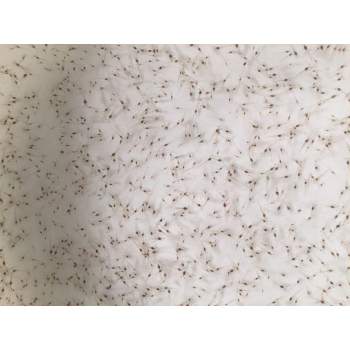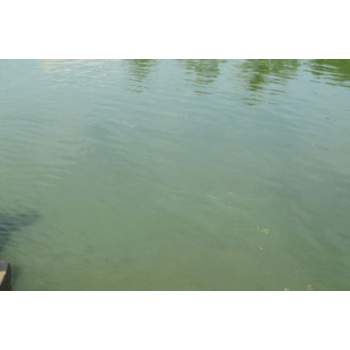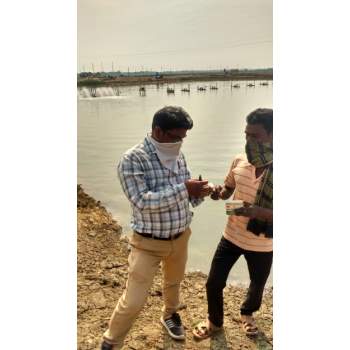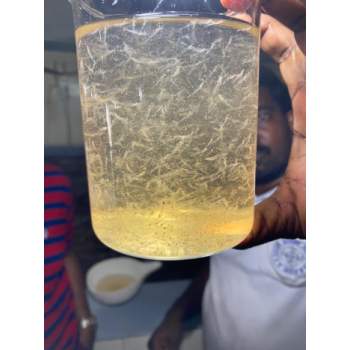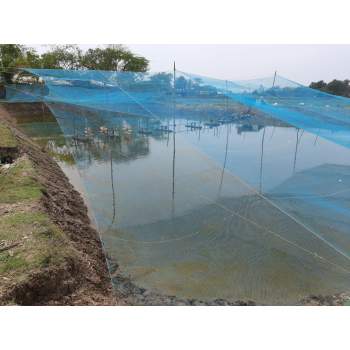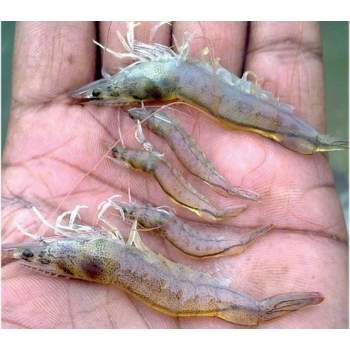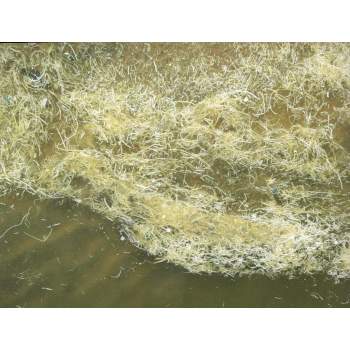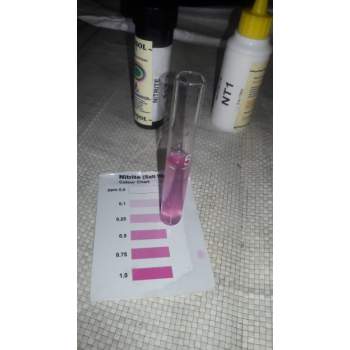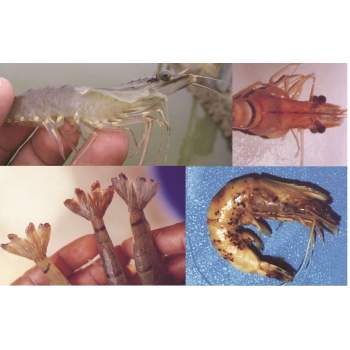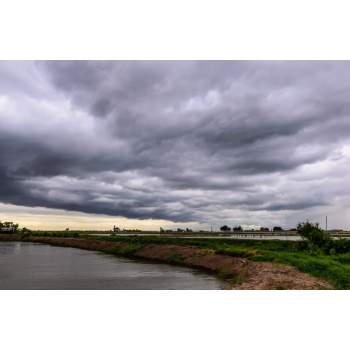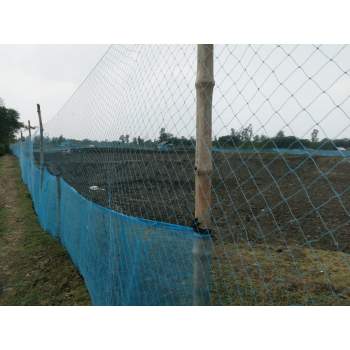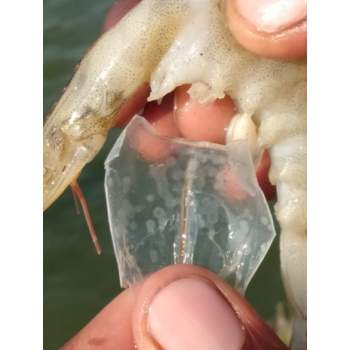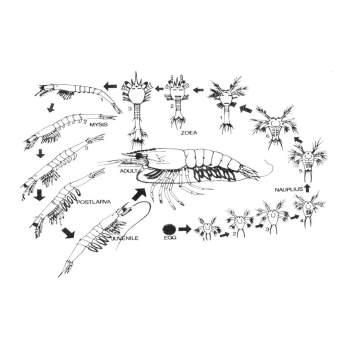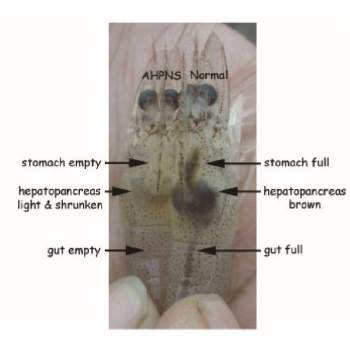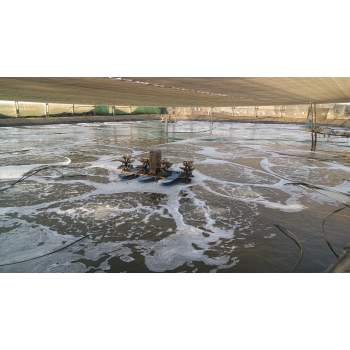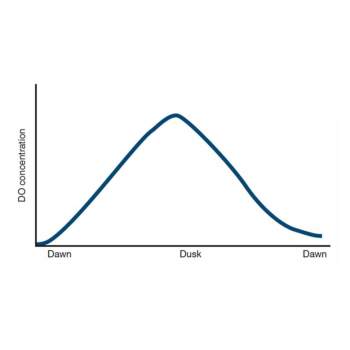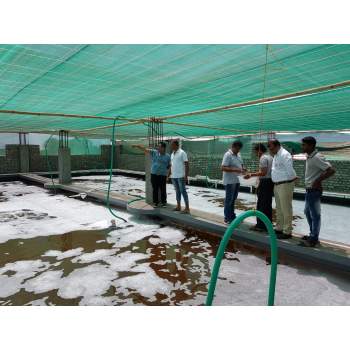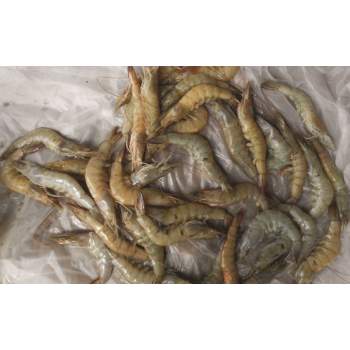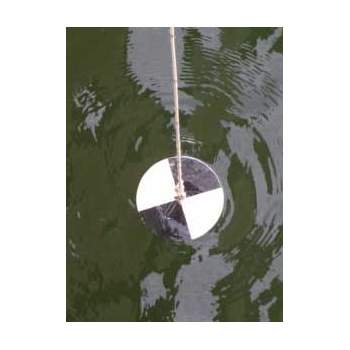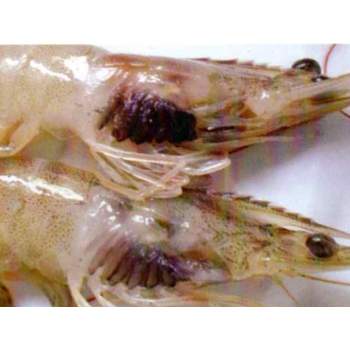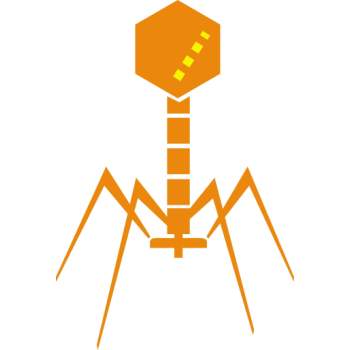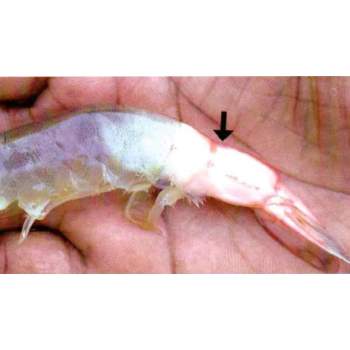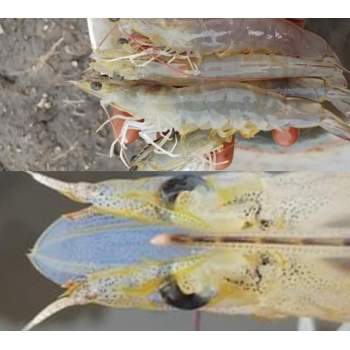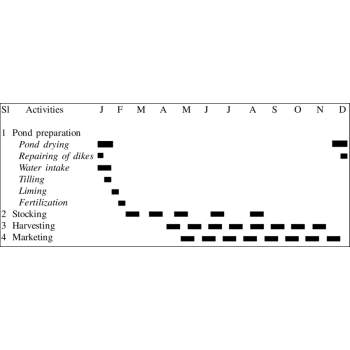Litopenaeus vannamei is a decapod crustacean which is native to the Eastern Pacific coast from Sonora, Mexico in the North, through Central and South America as far South as Tumbes in Peru, in areas where water temperatures are normally >20°C throughout the year. Penaeus vannamei live in tropical marine habitats. It has been introduced widely around the world since the 1970s, but especially since 2000, as it has become the principle cultured shrimp species in Asia.
Litopenaeus vannamei (Boone, 1931)
Common name: Whiteleg shrimp
Colour: Coloration normally translucent white, but can change depending on substratum, feed and water turbidity.
Species identification: It has 7-10 teeth on the dorsal rostrum and 2-4 on the ventral side.
Taxonomy:
Order: Decapoda
Suborder: Natantia
Infraorder: Penaeidea
Superfamily: Penaeoidea
Family: Penaeidae
Genus: Penaeus
Species: P. vannamei
Habitat: Depth 0 to 72 m. Bottom mud. Marine (adults) and estuarine (juveniles)
Size: Maximum size 23 cm, with maximum Carapace Length of 9 cm. Maximum weight of female 120 g. Females commonly faster growing and larger than males.
Biology: Males become mature from 20 g and females from 28 g onwards at the age of 6–7 months. P. vannamei weighing 30–45 g will spawn 1,00,000–2,50,000 eggs of approximately 0.22 mm in diameter. Hatching occurs about 16 hours after spawning and fertilization. The first stage larvae, termed nauplii, swim intermittently and are positively phototactic. Nauplii do not feed, but live on their yolk reserves. The next larval stages (protozoea, mysis and early postlarvae respectively) remain planktonic for some time, eat phytoplankton and zooplankton, and are carried towards the shore by tidal currents. The postlarvae (PL) change their planktonic habit about 5 days after moulting into PL, move inshore and begin feeding on benthic detritus, worms, bivalves and crustaceans.
